In this article we will breakdown the DNA of the most popular scams and provide suggestions on ways to avoid falling prey to them. Young and old alike are subject to the perils of modern connectivity that technology affords us. Part of the boon of this is our personal information (phone number, email) been sold, traded, and stolen by unscrupulous individuals who’s only calling is to theft.
Before we delve into the variety of scams targeting unsuspecting individuals, a rule of thumb is to avoid clicking on any unsolicited links in your text/email/or any other forms of communication. Unsolicited in the sense that these texts arrive without you initiating a request or expecting a notification. And even if you are expecting one, please always go to these addresses on your own not using a link you got in an email or text.
If something comes up about your account, log into your account yourself and check it. Or call customer service yourself and verify.

Netflix Account Scam
The scammer here pretends to be the streaming service Netflix and will notify you about a payment issue or a threat to cut off your service unless you provide a payment. The messages look something like this:
“Your account will be suspended because your payment failed,” the message says. “Please click the link and update your payment information to continue watching.”
This type of scam is called “phishing”, and the perpetrators are trying to trick you into divulging person and/or financial information.
The scam typically leads to identity theft or a situation where they demand ransom for access to your stolen information. The importance can not be stressed enough of avoiding opening links from unsolicited contacts to prevent download of an invasive computer program.
Impersonating Fraud Prevention Companies
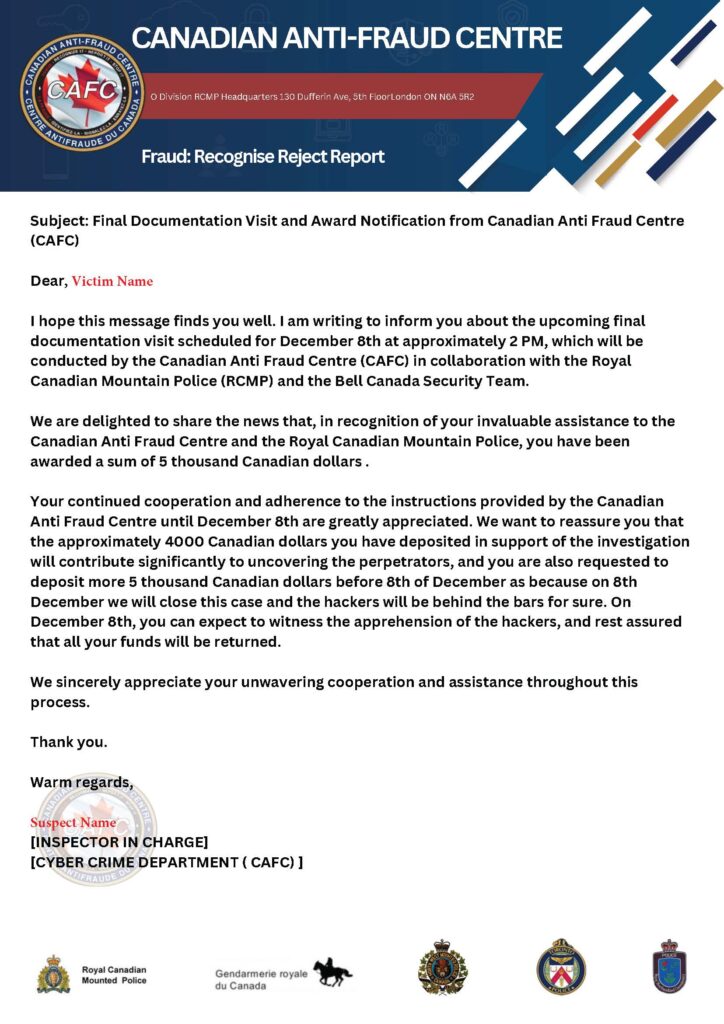
If you are trying to gain immediate trust, no better authority to impersonate than the Canadian Anti-Fraud Centre (CAFC). Couple that with a threat of legal action or an offer of help “improving security” and you get people releasing personal information they normally wouldn’t.
Keep in mind that the thieves are likely to use letterheads, logos, possibly email domains that imply they are legitimate.
Please find a list of preventative measures recommended by the CAFC:
- Avoid Dialing *72: This forwards calls to fraudsters.
- Common Card Digits: Fraudsters may share the first 4 digits of your debit/credit card. Individuals are reminded that most debit and credit card numbers belonging to well-known financial institutions begin with the same 4 numbers.
- Early Morning Calls: Be cautious of calls from bank investigator fraudsters in the early morning targeting less alert victims.
- No Fund Transfers: Financial institutions or online merchants won’t request fund transfers to external accounts for security reasons.
- Card Handover: Institutions or police won’t ask for you to handover your bank card at your place of residence.
- Call-Spoofing: Criminals use call-spoofing to mislead victims; don’t trust displayed phone numbers.
- No Remote Access: Never grant remote computer access to unknown people.
- Verify Callers: If a call claims to be from your financial institution, insist on calling back using the official number on your card.
- Independent Verification: End the call and dial the number on your card from a different phone or wait 10 minutes before calling back.
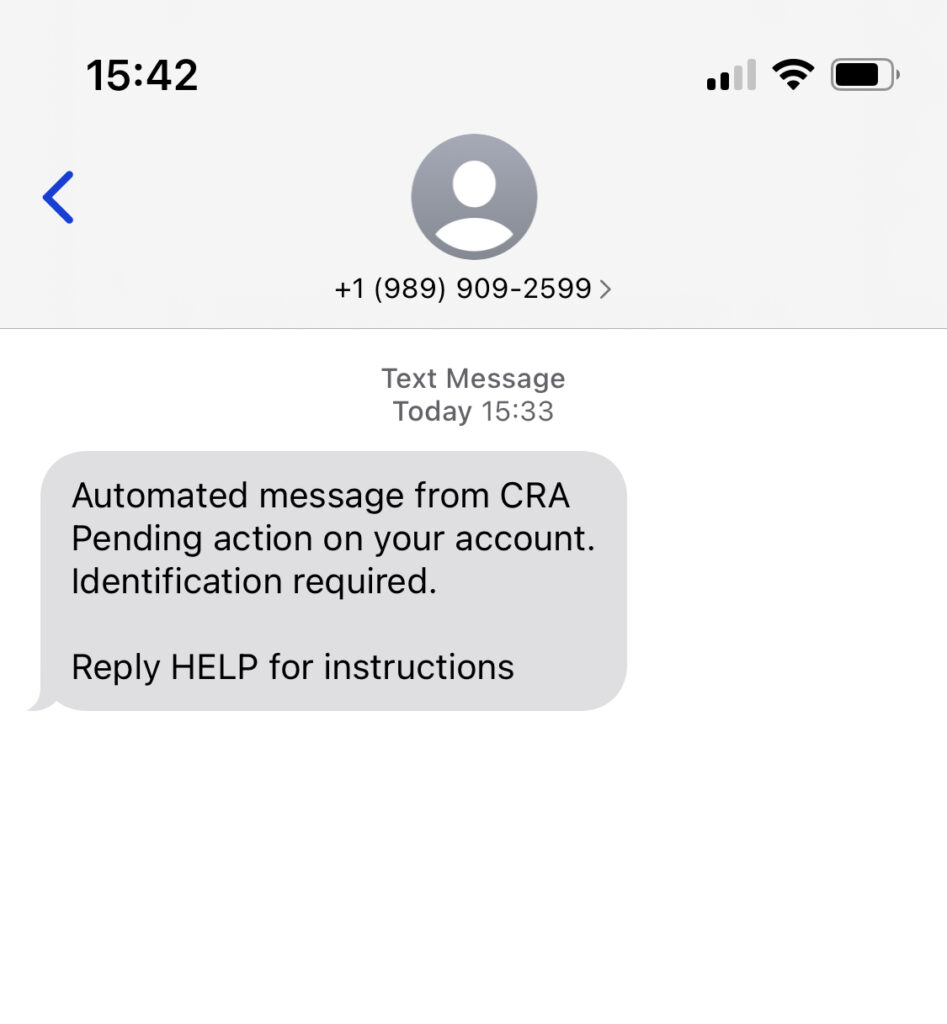
Canada Revenue tax Scam
Another official account that typically gets impersonated is Canada Revenue Agency (CRA). This is unfortunately prevalent, and people need to be extra cautious and aware of how the CRA typically interacts with the public.
Personal information like bank account details, SIN numbers, and credit card information will not be requested through emails or text messages.
The CRA also does not demand immediate payment or set up public meetings for payment. They also do not send emails and text messages with links for payments and/or refunds.
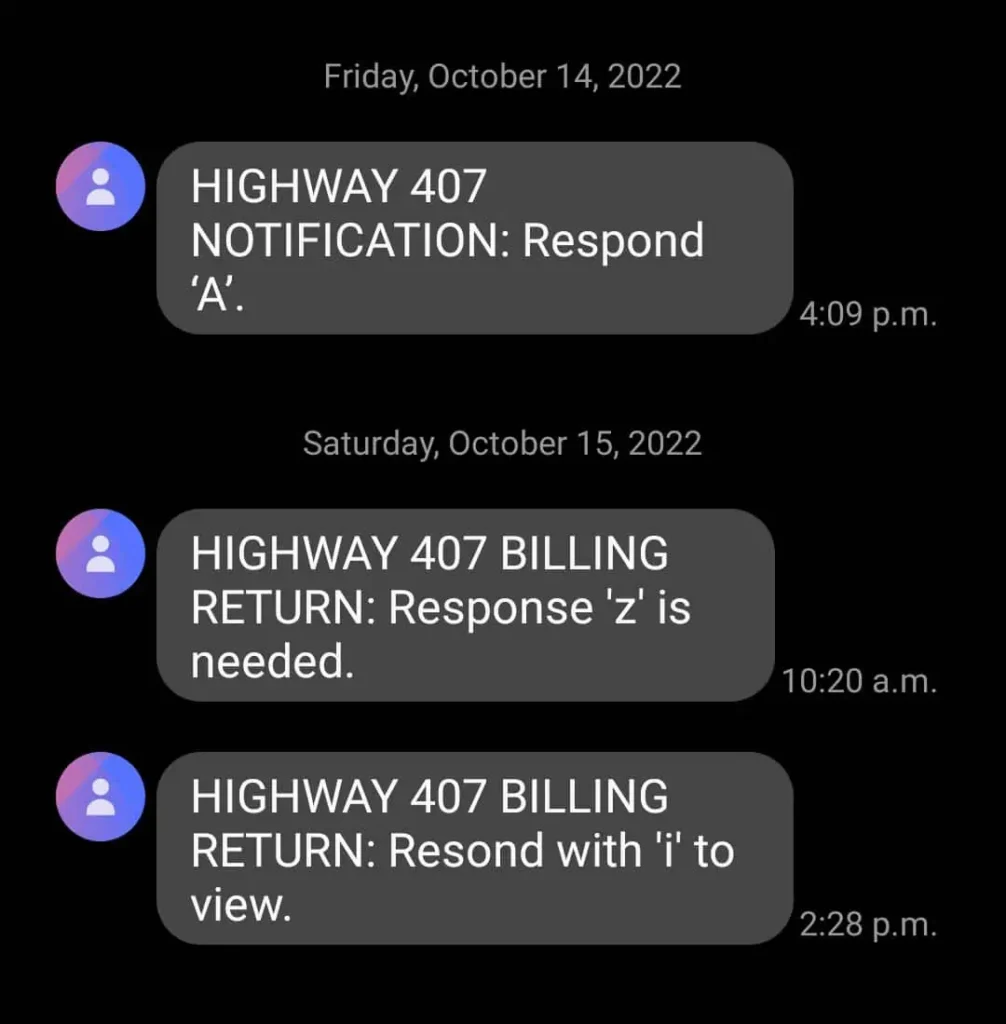
Highway 407 ETR Scam
Drivers that use the toll highways frequently need to be aware of the 407 scam. The 407 continues to issue statements and updates to the public warning of these scams and to remind people of their standard operating policies with regards to payments.
The updates go over the major precautions like avoiding links in messages and ignoring messages requesting payment or personal information.
Going to their official website and information routes independently is always emphasized: http://407etr.com/contactus.
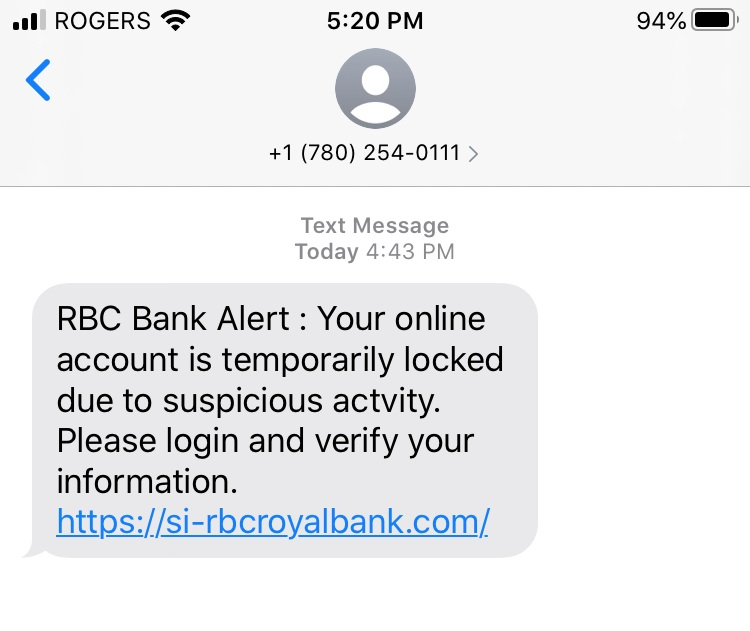
Bank Account Scam
Given the many services offered by Banks there is a variety of methods the thieves employ in these types of scams. A lot of them can be found highlighted by RBC over the last couple years https://www.rbc.com/cyber-security/alerts/index.html
The typical scam revolves around a text message informing a client about an account suspension for suspicious activity and requires the client to login using an attached link.
The best safety measures are to contact the institution directly and never share any personal or banking information.

Job Recruitment Scam
Given the current state of the economy and job markets this one proves very tempting but also quite invasive. Typically through WhatsApp, “recruiters” will reach out to people concerning jobs they probably never applied for, but if you are desperate to get work it is very tempting.
The Canadian Anti-Fraud Centre warns of an increase in the prevalence of this variant since August 25, 2023.
The accepted response is to block the number, refrain from responding to the message, and avoid providing personal information of any kind.
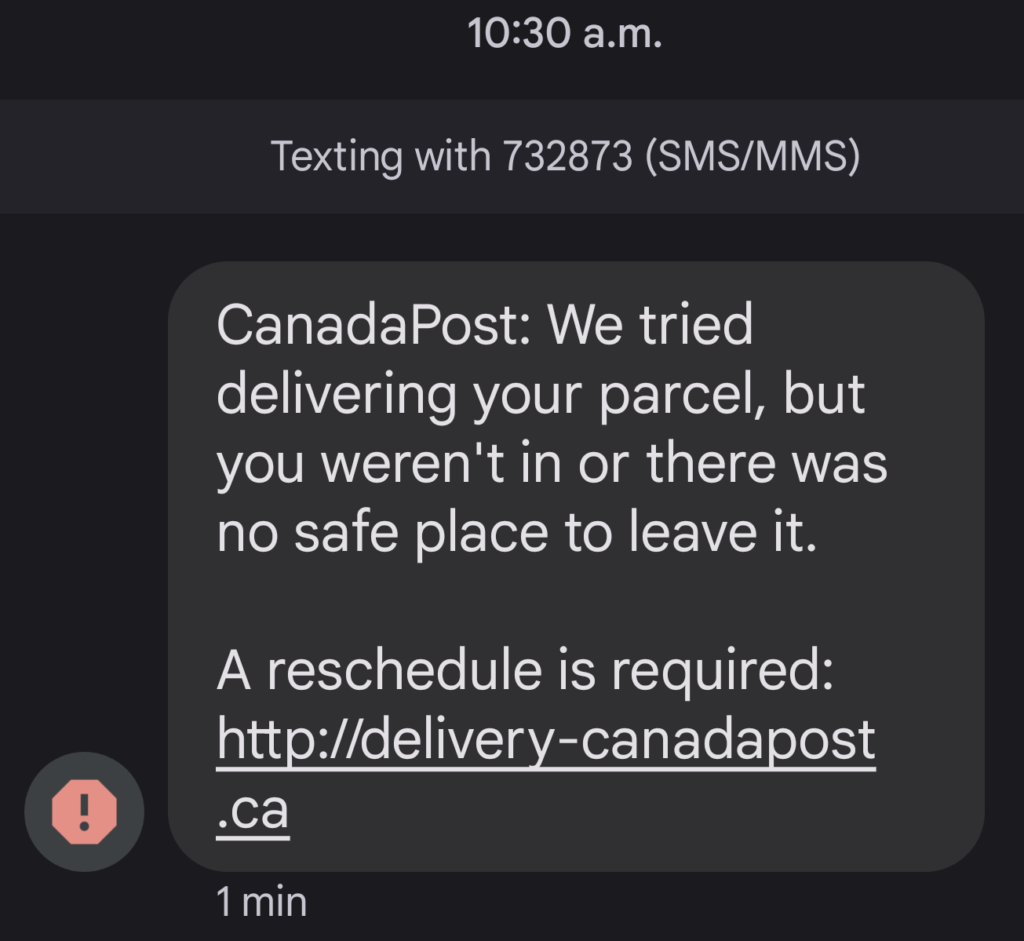
Package Delivery Scam
There are many ways this type of scam can present itself but a few of them are requests for address information to complete delivery, additional payment required, or some variant of these.
Canada Post addresses this on their website reminding clients they do not send out messages and such messages should be deleted.
“We will never reach out to you by text message to request credit card or banking information, account information such as your password, or payments to release deliveries and/or see updated tracking information,” Canada Post states on their website.
“Messages will only come from sender IDs 272727 or 55555 and only if you’ve signed up for notifications,” the postal service adds.
For more information the link is below:
Hopefully with this article we have enlightened you on some scams you were not aware of and reinforced your suspicions on ones you may have come into contact with. You are unfortunately not alone in this. All we can do is continue to be cautious and staying aware of what pop up on our phones and what we click on. We hope none of you fall victim to any of these scams and report them when you come across them as much as you are able to.
Stay Safe. Stay Blessed. Stay Well.

